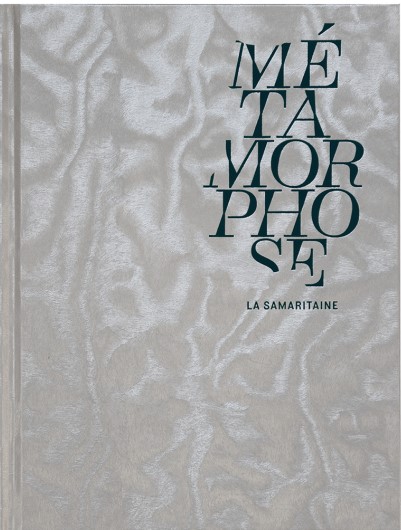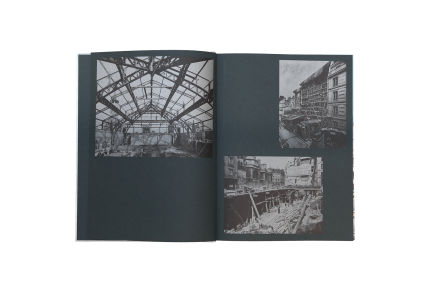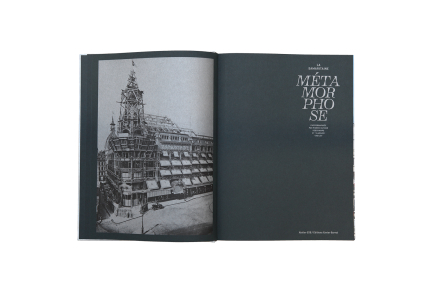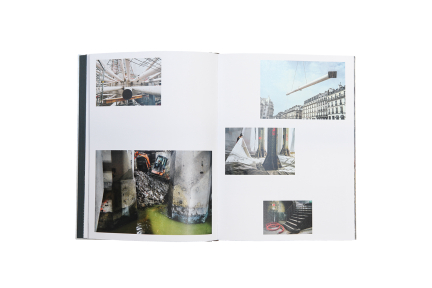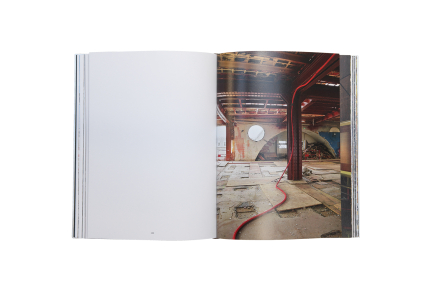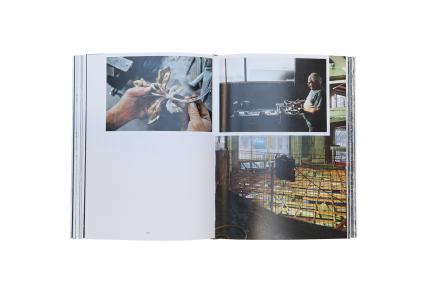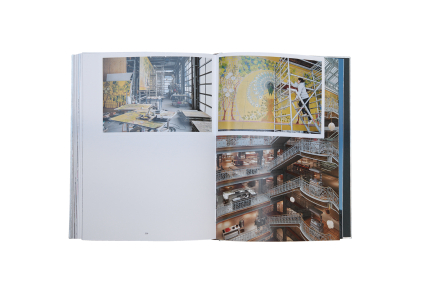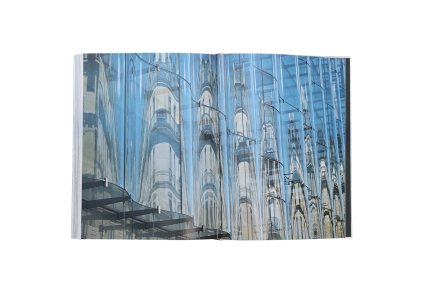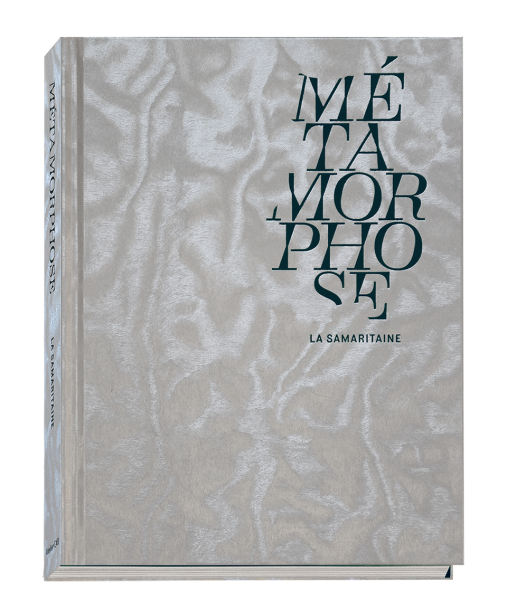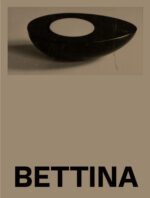Fondée en 1870, la Samaritaine est l’un des bâtiments les plus emblématiques de Paris présentant un subtil mélange d’Art déco et d’Art nouveau. En parallèle d’une grande campagne de production d’œuvres réalisées par une cinquantaine d’artistes (présentées dans l’ouvrage Samaritaines, paru en janvier 2021), la Samaritaine a donné carte blanche aux photographes Pierre-Olivier Deschamps et Vladimir Vasilev, qui ont pu accéder au chantier entre 2015 et 2020, et suivre la métamorphose du bâtiment.
Ce chantier colossal de plus de 80 000 m2 sur onze niveaux, en plein cœur de Paris, est donc devenu pendant cinq ans le terrain de jeu des deux artistes.
Pierre-Olivier Deschamps s’est intéressé à l’architecture, aux variations d’échelles et aux couleurs, extraordinaires, que le chaos organisé du chantier a créées. Ce travail à la chambre photographique donne à voir une beauté inattendue à travers cette approche picturale des lieux. Vladimir Vasilev, quant à lui, s’est intéressé à la fois au chantier ainsi qu’aux hommes et aux femmes qui s’activaient dans cette fourmilière, offrant un visage aux multiples facettes à cette transformation.
L’ouvrage Métamorphose mêle ces deux approches dans un déroulé chronologique, enrichies d’un texte de Christian Caujolle et d’un entretien avec les deux artistes, qui contextualisent cette campagne photographique si singulière.
Founded in 1870, the Samaritaine is one of the most emblematic buildings in Paris, presenting a subtle blend of Art Deco and Art Nouveau. In parallel with a major commission of works by some fifty artists (presented in the book Samaritaines, published in January 2021), the Samaritaine gave carte blanche to photographers Pierre-Olivier Deschamps and Vladimir Vasilev, who were able to access the site between 2015 and 2020, and follow the building’s metamorphosis.
This colossal project of more than 80,000 m2 on eleven levels, in the heart of Paris, has therefore become for five years the playground of the two artists. Pierre-Olivier Deschamps was interested in the architecture, the variations in scale and the extraordinary colors that the organized chaos of the site created. This work taken with the photographic chamber offers an unexpected beauty through a pictorial approach of the place. Vladimir Vasilev, meanwhile, took an interest in both the building as well as in the men and women who bustled about in this anthill, offering a multi-faceted face to this transformation.
The book Métamorphose combines these two approaches in a chronological sequence, enriched by a text by Christian Caujolle and an interview with the two artists, which contextualize this unique photographic campaign.

